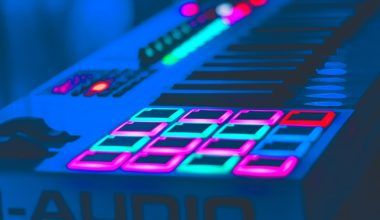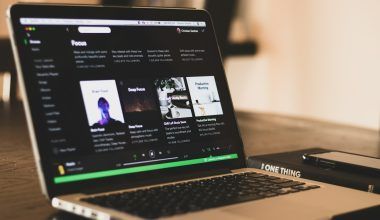Punjabi music is known for its energy, rhythm, and cultural richness. From foot-tapping bhangra beats to soulful melodies, the world of Punjabi music is diverse and captivating. At the heart of every hit track is a high-quality Punjabi recording, where artistry meets technology to create masterpieces.
In this blog, we’ll explore the essentials of Punjabi recording, from setting up a studio to mastering tracks, ensuring your music reaches its full potential.
What Is Punjabi Recording?
Punjabi recording is the process of capturing and producing music in the Punjabi language or style. It involves recording vocals, instruments, and beats that reflect the unique rhythms and melodies of Punjabi culture.
Whether it’s for folk songs, modern bhangra, or Punjabi rap, the recording process plays a crucial role in shaping the final sound.
The Importance of High-Quality Punjabi Recording
1. Preserves Cultural Authenticity
Punjabi music has deep cultural roots. High-quality recording ensures that the authenticity and nuances of the genre are maintained.
2. Enhances Listening Experience
Professional recording elevates the sound quality, making tracks more enjoyable for listeners.
3. Boosts Global Appeal
With Punjabi music gaining international popularity, a well-recorded track can reach audiences worldwide.
Essential Tools for Punjabi Recording
1. Microphones
- Condenser Microphones: Ideal for capturing vocals.
- Dynamic Microphones: Suitable for live instruments.
2. Audio Interface
Connects microphones and instruments to your computer for recording.
3. DAW (Digital Audio Workstation)
Software like Ableton Live, Logic Pro, or FL Studio is essential for mixing and editing.
4. Studio Monitors and Headphones
Ensure accurate sound reproduction during recording and mixing.
5. Pop Filter
Reduces unwanted popping sounds during vocal recording.
Setting Up a Punjabi Recording Studio
Creating a professional recording environment is key to producing high-quality Punjabi music.
1. Room Acoustics
- Use acoustic panels to minimize echoes.
- Position your recording setup away from windows and noisy areas.
2. Equipment Placement
- Position microphones and monitors strategically for optimal sound capture.
- Keep your workspace organized for efficiency.
3. Software Configuration
- Install and set up your DAW with plugins for Punjabi music styles, like tabla loops or dhol beats.
The Recording Process for Punjabi Music
Step 1: Pre-Production
- Finalize your lyrics and melody.
- Choose the instruments and beats.
Step 2: Recording Vocals
- Warm up before recording.
- Maintain consistent distance from the microphone.
- Record multiple takes for better editing options.
Step 3: Instrumental Recording
- Use live instruments like dhol, tumbi, and harmonium for an authentic sound.
- Layer electronic beats with traditional rhythms for fusion tracks.
Step 4: Mixing and Mastering
- Balance vocals and instruments for a cohesive sound.
- Use EQ, compression, and reverb to enhance the track.
Tips for Capturing Authentic Punjabi Vocals
- Understand Dialects
Punjabi has several dialects. Choose the one that suits your audience and song style. - Focus on Pronunciation
Clear and accurate pronunciation enhances the track’s impact. - Experiment with Emotions
Punjabi songs are often emotional. Bring life to your lyrics with expressive singing.
Popular Genres in Punjabi Recording
1. Bhangra
High-energy beats and traditional dhol rhythms make this genre ideal for parties and celebrations.
2. Punjabi Folk
Rooted in tradition, folk music uses instruments like the tumbi and algoza.
3. Punjabi Pop
A modern take on Punjabi music, blending electronic beats with traditional elements.
4. Punjabi Rap
Combines Punjabi lyrics with hip-hop beats, appealing to younger audiences.
5. Punjabi Sufi
Focuses on spirituality and poetic lyrics, often accompanied by classical instruments.
Challenges in Punjabi Recording
- Maintaining Authenticity
Balancing traditional sounds with modern production techniques can be tricky. - Language Barriers
Non-native speakers may find it challenging to capture the essence of Punjabi lyrics. - Equipment Costs
High-quality recording equipment can be expensive. - Sound Clarity
Traditional instruments require careful mic placement for clear recording.
Emerging Trends in Punjabi Recording
1. Fusion Music
Artists are blending Punjabi rhythms with global genres like EDM and reggae.
2. AI-Assisted Production
AI tools are helping producers create loops and mix tracks faster.
3. Global Collaborations
Punjabi artists are collaborating with international musicians, expanding their reach.
4. DIY Recording
Affordable software and online tutorials are enabling independent artists to record from home.
Promoting Your Punjabi Music
1. Streaming Platforms
Upload your tracks to Spotify, Apple Music, and YouTube Music.
Share snippets and behind-the-scenes content on Instagram and TikTok.
3. Live Performances
Perform at cultural events and festivals to gain exposure.
4. Collaborations
Work with other Punjabi artists to expand your audience.
Conclusion: Elevate Your Punjabi Recording
Producing high-quality Punjabi recording requires a mix of technical expertise and cultural understanding. With the right tools, techniques, and creativity, you can create music that resonates deeply with listeners. Embrace the rich heritage of Punjabi music while exploring new trends to make your mark in the industry.
For further reading, explore these related articles:
- Famous Punjabi People: Icons of Culture, Art, and Legacy
- Exploring the Vibrant Punjabi Music Industry: Evolution, Trends, and Future
For additional resources on music marketing and distribution, visit Deliver My Tune.




